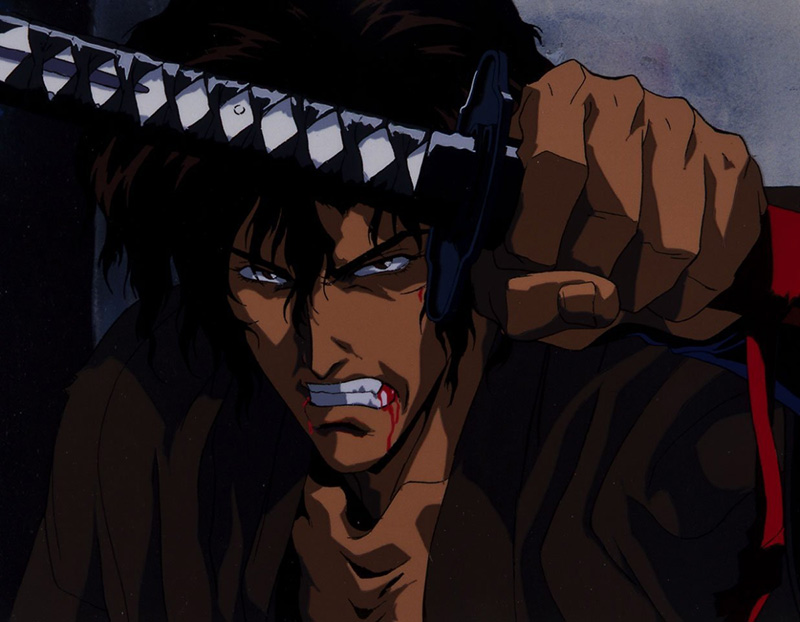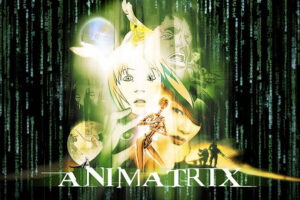
For those who grew up watching anime in the 90s, there were three seminal films that stood at the pinnacle of the medium’s powers: Ninja Scroll, Akira, and Vampire Hunter D: Bloodlust. These movies showed a generation of wide-eyed kids and teens just how mature, violent, and thought-provoking animation could be. They shaped our adolescent tastes and remain burned into our nostalgic memories decades later.
Ninja Scroll
Upon its 1993 release, Ninja Scroll immediately cemented its status as an anime legend thanks to its unforgettable characters, thrilling action, and mature style. Directed by Yoshiaki Kawajiri, Ninja Scroll combined exaggerated violence with emotional drama to create a unique ninja tale.
At the time, its fluid animation and intense, bloody combat stood as a technical triumph, showing just how slick and fast anime action could be. The breakneck sword fights and supernatural powers still hold up today thanks to their cinematic choreography and use of dynamic perspectives during the fights. Each duel with the villainous Devils of Kimon pushes the boundaries of ninja combat in spectacular fashion.
Beyond the groundbreaking animation, Ninja Scroll also featured a stoic hero in Jubei and compelling supporting characters like the tragic poison maiden Kagero. Jubei’s backstory of lost honor and duty to his fellow ninjas gave the film unexpected emotional weight. Ninja Scroll proved anime could not only match but arguably surpass live-action martial arts films through its combination of stylized action and resonant Japanese dramatic tones.
Ninja Scroll showed both Japanese and Western audiences that anime could appeal to adult sensibilities. Its mature content came together with its elegant rendering of feudal Japan, making it one of the most accessible gateways into anime fandom. The film remains hugely influential for its dark, sleek ninja fantasy world that opened people’s eyes to the medium’s potential. For both its historical significance and sheer artistic merit, Ninja Scroll is absolutely an anime masterwork.
Akira
The groundbreaking 1988 anime film Akira remains an absolute masterpiece over 30 years after its release. Directed by Katsuhiro Otomo based on his manga, Akira’s cyberpunk dystopian vision of Neo Tokyo in 2019 pushed the boundaries of animation and science fiction storytelling.
On a technical level, Akira pioneered advanced techniques like multi-layered cel animation to portray its detailed futuristic cityscapes and kinetic action sequences. The smooth motorcycle chases, psychic power distortions, and grotesquely mutated Tetsuo showed cinema-quality animation could match live action’s verisimilitude. This technical mastery immersed viewers in its ominous setting and chaotic apocalyptic energy.
Narratively, Akira dealt with complex themes of corrupted power, social unrest, and youth identity. The story centers on teenage bikers Kaneda and Tetsuo as the latter’s telekinetic abilities spiral out of control. It’s a cerebral and at times nihilistic tale as these friends clash amidst shadowy government conspiracies and an impending doomsday. Akira refused to simplify its storytelling for animation, respecting the medium as capable of mature narratives.
From its instantly iconic cyberpunk visuals to its heady existentialist themes, Akira expanded the notions of what animation could accomplish. It influenced countless sci-fi creators with its dystopian vision and dynamic motion. Even today, few anime films have matched Akira’s narrative depth and technical mastery. For its pioneering innovation and thematic ambition, Akira deserves recognition as a true anime legend.
Vampire Hunter D
Among all the anime films that pushed the artistic boundaries of the medium, 2000’s Vampire Hunter D: Bloodlust stands out as a groundbreaking gothic masterpiece. Directed by Yoshiaki Kawajiri, Bloodlust perfected the look, tone, and storytelling that defines great anime.
Visually, Bloodlust is an absolute triumph, creating a dark, romantic vision of the future filled with haunted castles, mutated demons, and flowing capes. The gothic settings and character designs are brought to life through fluid, beautifully detailed animation that was unprecedented at the time of its release. From the ominous carriages to D’s piercing eyes and cloak billowing in the wind, Bloodlust immerses the viewer in its moody, nocturnal atmosphere.
Beyond its visual brilliance, Bloodlust also spins a mature, philosophical sci-fi/horror tale that combines vampire hunter lore with musings on humanity and morality. D is the ultimate anime anti-hero – cold yet sympathetic, caught between human and vampire realms. His motivations grow murky as the film questions whether he is driven by altruism or his own tortured psychology.
Bloodlust moves anime’s storytelling maturity forward with its elegant, nuanced writing and fully-realized characters. D, the vampiric Meier, and vampire hunter Leila form an ensemble that highlights intricate relationships between life, death, desire, and nobility.
From its unprecedented animation quality to its resonant themes, Bloodlust represents the pinnacle of anime’s potential. It balances delicate beauty, violent action, and existential depth in a way few other anime films have achieved. Even decades later, Vampire Hunter D: Bloodlust stands tall as one of the most complete creative visions anime has ever manifested. It showed a generation of fans and creators just how profound animated storytelling could be.
brant artistic medium capable of mind-bending spectacle and thoughtful maturity beyond children’s cartoons. Their perfect alchemy of violence, imagination, and philosophy shaped anime tastes for years to come.









Leave a Reply